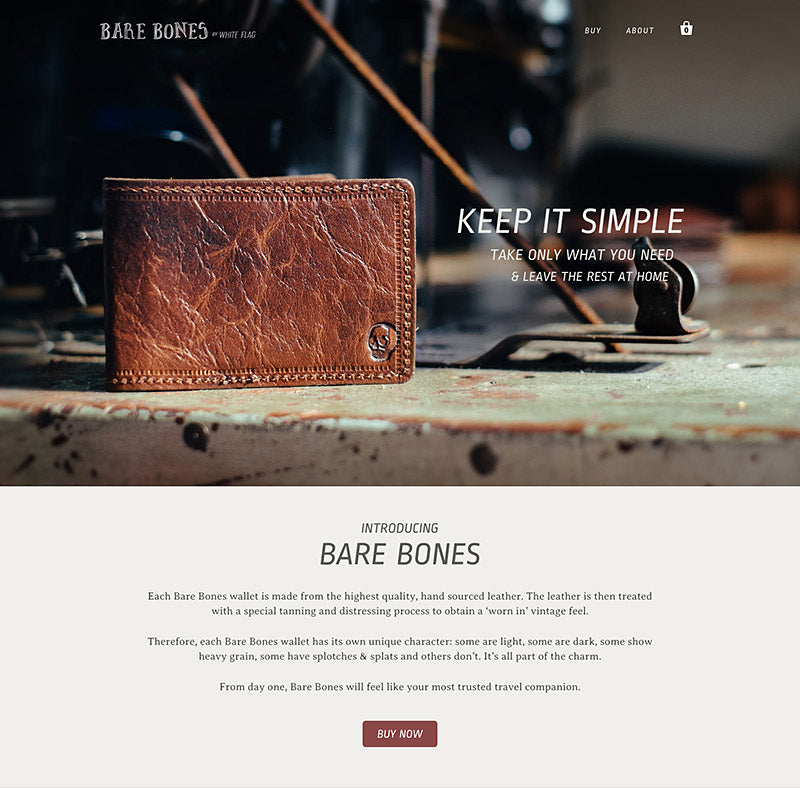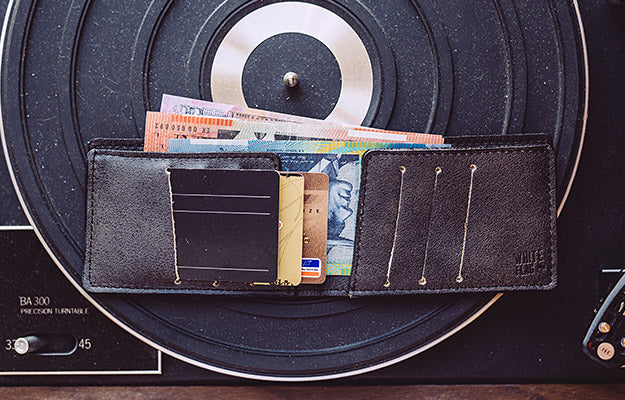From a business standpoint, there is a big difference between developing an online store for a client and running your own online business. In the first case, you get paid to work hard; in the second, you need to work hard to get paid.
Working within Shopify daily, I like to think I earned the title ‘Shopify Expert’ (Shopify’s words, not mine … but that doesn’t stop me from repeating it :) ). But as much as I endeavour to know the platform and understand how to run a successful online store, I’m always being challenged and taught about ecommerce by my clients because they are the ones working hard each day to push their product and connect with customers.
In my business, I always want to know what I’m offering and to be able to provide the best solution. Sometimes the only way to learn is to do.
You might also like: How Building Customer Relationships Will Help You Create a Million Dollar Business
How I became my own client
As an experiment, I decided to start my own online store. So I created my own brand, developed my own product, and launched my own online store in order to become my own client.
Like a tattoo artist practicing on his own arm, I wanted to understand what it was like to run my own store on a day-to-day basis, and find out how to actually sell something, and connect with customers. I wanted to answer the following questions from the other side of the table — as a shop owner, and not only as a designer: What are the biggest challenges in ecommerce? What do customers value? Are there tons of customers out there waiting to be sold to that I don’t know about?
So I created Bare Bones — an online store that sells wallets.

There are so many things I’ve learned throughout the whole process of creating and launching a product-based brand, but I wanted to highlight the most important knowledge I've gained from being my own client. Hopefully as a Shopify Partner, you can learn something from my experience to help your own clients out.
Lesson 1: The 2% conversion rate is real
The first thing that was really evident was that the 2% conversion rate is real. I've read research stating that the average percent of site visitors that complete checkout and purchase is 2.35%. I would share this with my clients and stress the importance of taking this into account when they are forecasting. However, it’s not until you live by selling your own product that you understand that the ‘struggle is real.’
Don’t fall into the same trap (that maybe I did) of thinking, “When I launch this store, the orders will come flooding in. I’ll quit my job and live off the sweet, sweet profit of my online sales… Maybe I’ll even move to New York!”
Unfortunately, it doesn’t happen that way. I’m sure it has for someone, but on average, no.
My site launched and even though there was a peak in sales on the first week, I’ve only had a 1.6% conversion rate. Luckily for me, I was never aiming to live off the sweet, sweet profits. When I see the stats though, I’d be happy with 2%.
After taking a quick poll of all my clients' sites (with their permission, I assure you), I found out that we were all in the same boat. On average, 4% will reach checkout, and around 2% will actually complete the checkout.
How to work with the 2%
A common trait with those who make it in online business is that they know their numbers and they know their market. So, I decided to start with the inevitable and work backwards. If only 2% of visitors are going to purchase, then how many visitors do I actually need to cover costs each week and make money online?
When you think about it like this, it puts the control back in your hands. It’s no longer a harrowing statistic, but something to work with. Let’s say, and this is a really rough example:
- I want to profit $500 a week from sales
- I make $20 profit on every sale
- I need 25 sales within a week
- I need 1,250 visitors per week / ~180 visitors per day
That suddenly sounds doable, right?
It’s not going to happen by itself, but I’ve found it helps to create a realistic and grounded approach to selling online. It gives you have a rough idea of the customer base you need.
Once you’ve figured out how many visitors you need, you need to start asking yourself: Where do I find those customers? How do I connect with them? What can I offer them? How can I get them to visit my store?
The obvious place to start these days is social media. By utilizing targeted advertising, running a competition that will build your email list, and partnering with bloggers or people of influence online, you can build the ‘right’ audience quite quickly.
And once you have the audience, you need to make sure that your site is clearly communicating the value of your product in a beautiful and enticing way (this is where the designer in me kicks in). Then, the 2% won’t even hesitate and the ‘Purchase’ button couldn’t be clicked fast enough.
Lesson 2: Customers want to connect
Shopping online is largely a digital experience, and so it's easy to forget that at the end of each computer is a person making a decision, usually based on emotion — “I like that, I want that, this makes me feel good, if I got this I could …” and so on. Most of the time, it’s not a utilitarian transaction of “I need this and therefore I press purchase.” Usually, people are buying because they like what they see and they like what your brand is about. It’s an emotional decision; a customer is literally ‘buying into’ what you are selling.
You might also like: Web Design Experts Share Their Advice for Attracting Your Next Client
Make it as personal as possible
With so much focus on ‘converting sales,’ it can be easy to forget the real reasons why people choose to purchase from you. Nurturing this relationship post-purchase can be a huge asset for a business.
For example, Bare Bones, my new online store, is for the person that wants to simplify. Our mantra is: ‘Keep it Simple. Take enough for the good times and leave the rest at home.’ I’m promoting a certain outlook on life and offering a wallet that fits with this sentiment.

What I’ve found is that customers are really connecting with the message and want more of it from Bare Bones — not just the wallet, but as a way to be part of an ongoing conversation.
In launching my online store, one way I chose to connect with my customers (and potential customers) was through email marketing. I’ve been running a fortnightly newsletter centred around the idea of: ‘Keep It Simple.’ The response has been really great.
Not only am I supplying regular content that people are interested in, but I’m encouraging them to reply to the email, share their experiences, and contribute to future topics. It’s given customers a continued way to connect with Bare Bones, and be part of a conversation beyond purchasing the product.
As a result, visitors have become customers, and then customers have become repeat customers and advocates for the brand, sharing their experience and encouraging more people to check us out. It’s personal connections like this that will keep convincing customers to make personal decisions when they shop online.
Lesson 3: Design a special experience
We all judge books by their covers. If you’ve shopped online, you know the feeling of anticipation once you’ve clicked ‘Purchase.' You refresh the tracking number page five times an hour, you cancel all appointments on the day of delivery, and once it gets to you, those first few moments of unwrapping and experiencing the product are crucial to your enjoyment.
If that first impression doesn’t live up to the hype you’ve created for yourself, it’s kinda scarring. I’ve learned that delivery of the product is as important as the product itself, especially if you’ve done an amazing job of ‘selling’ the product online.
When I started Bare Bones, I wanted the whole experience — online and offline — to be impressive and enjoyable. Getting what I wanted out of the online experience was easy with Shopify. Done. But the offline experience was something I wanted to focus on as well: I wanted the arrival of the package in the mail and the simple task of ‘unboxing’ to feel special. So I went the extra mile.
I commissioned wooden ‘matchbox style’ boxes for each wallet that were hand-branded with my logo. Inside each package was a numbered and signed certificate, the wallet in a stamped linen bag, our business card, a guitar pick and a handwritten note that said “Thanks.”
Make your first impression last
By far, the most talked about part of Bare Bones was the offline experience I had created. Customers love the wooden boxes and I’ve had countless comments about the whole experience. Suddenly they wanted to buy another for a friend or refer someone to purchase from my site. In other words, they wanted to share the experience with others. It’s not just about a wallet, but the experience they have of receiving and unboxing their new accessory.

As a designer, I encourage each client to find their own unique way of providing a great experience for their customers. It not only encourages them to repeat the experience, but you can be sure it’ll be talked about to 10 other potential customers.
An invaluable lesson
Even though Bare Bones is a side project and I’m not running it full time, the experiment really helped me understand some of the struggles, challenges, and joys of online selling.
The biggest thing I’ve learned throughout this project has been that setting up an online store is kinda the easy part (or easy for someone like me at least). Once the store is launched, you’ve got this great tool in your hands, but if you don’t work it properly, it’ll just be another website.
It takes a lot of work, but I’ve learned that the key to a successful online business is finding, connecting with, and nurturing your customers — not only online, but offline too.
Read more
- How to Set Your Client’s Branding Apart
- Learn from the Shopify Experts Who Won Build A Business
- How to Collect the Right Information from Your Clients
- How to Use Your Competitive Landscape to Grow Your Agency
- How to Get the Most out of Shopify Pursuit: A Conference for Growth, Connection, and Community
- 4 Conferences You Should Attend
- Build Your Ecommerce Business: Livestream
- Add Product Photography to Your Service Offerings With These Tips
- Grow Your Business With This Free Book
You might also like: 6 Questions to Help You Gauge Client Fit

